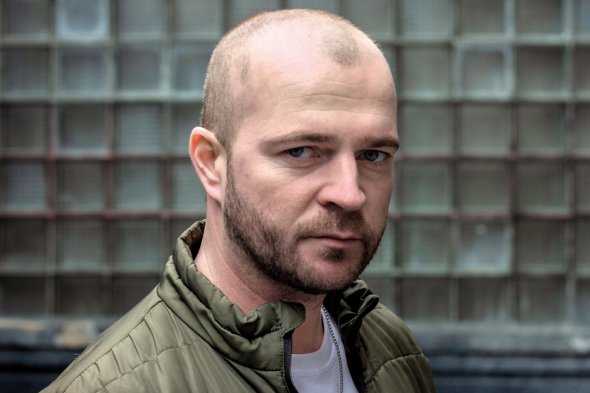The Come Back Alive Foundation was born out of the Russian aggression in Donbas and the illegal occupation of Crimea in 2014. More than a charity, the foundation is the major nationwide military funds manager for the Ukrainian army. After the Russian invasion of 24 February 2022, donations to the foundation have increased 100 times, but so has the workload, whereas the number of workers has only increased 2 times. However, for the team of the Foundation, it is more than just work, says the Head of the Military Department of the foundation, Andriy Rymaruk – “Because the lives of people are at stake.”

Rymaruk has headed up the Military Department for six years, and is himself a veteran of the Russo-Ukrainian war. He has been involved in important civilian projects as well, playing the main role in the world-renowned Ukrainian film Atlantis. Other roles in the film were also played, not by professional actors, but by real-life soldiers, veterans, and volunteers.
Rymaruk spoke extensively with Euromaidan Press on how the foundation interfaces with the army – buying equipment, influencing lawmakers, training soldiers and working with veterans, as well as conducting military analysis and developing strategic defense armaments. The following segments are his remarks.
The beginning: aid and training that saves lives
The Come Back Alive Foundation was established in the first days of the 2014 aggression by the Russian army. Initial undertakings were to supply the Ukrainian army with bulletproof vests, walkie-talkies, binoculars and other basic military articles. But the main tactical device at the time was thermal imagers.
We came to the understanding that it is necessary not only to protect our soldiers and to give them some security but to save their lives. Because if the enemy can spot you at night, when you can't see them, they have a definite advantage.
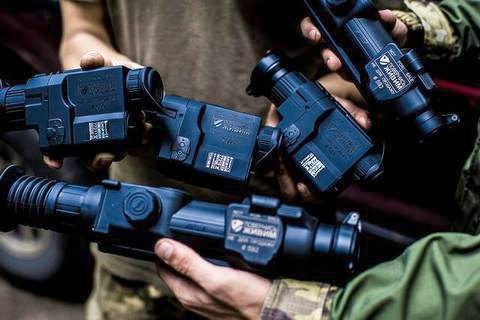
The foundation worked very hard in the first years, in comparison with other charities that gradually reduced their activity and, in time, dissolved. On the contrary, we expanded our areas of work. We added not only the provision of high-precision optics, but we also added a powerful instructor direction. Not only did we help the military, but we also made them more professional.
Expertise such as sniping has emerged. Our instructor, together with the current military, has created a sniper school that now produces all of the snipers in the army. This program has been approved by the Ministry of Defense of Ukraine and is expanding every year. In fact, the command of the Assault Troops has adapted our program of training snippers.
Ruslan Shpakovych, a sniper training instructor with the Come Back Alive Foundation, a calm and soft-spoken man, shares his live combat experience in the Russo-Ukrainian war. https://t.co/MHLNlXQOLf
— Euromaidan Press (@EuromaidanPress) February 8, 2022
Another powerful capability that has been added to Ukrainian soldiers’ professionalism is mine safety. As with sniping, our instructors have prepared an excellent curriculum and provided it to the state.
In other words, we began to influence the overall processes in the army. We started training programs for UAV operators and developed a training program for gunners who use our tablets to work on our ARMOR programs. Now, most of the Land Forces of Ukraine use this program. It facilitates defense capability for anti-aircraft guns, mortars of various calibers, and anti-tank grenade launchers.
Creating our own products

At some point, we realized that we could do even more, and began to devise our own products in collaboration with partners. We tried to make our own drone, so as not to rely on stock drones. Our experts developed an individual and group sapper pack [pack of numerous military tools used by combat engineers], tested it, supplied it to the troops, and received a positive response. Previously, all our sappers in the east used Soviet-style renditions from the 1970s and 1980s. This is our own product. Currently, it is very much needed by sappers, because many packs were lost in the first days of Russian hostilities.
A product that was my own personal idea – and a successful project – is a mobile surveillance system. We have transferred more than 80 such complexes to the east of the country. I was frustrated with the number of our losses from enemy sniper bullets in 2018-2019, and I wanted to secure the infantry and give them the chance to see and control their line of duty, without exposing themselves to danger.
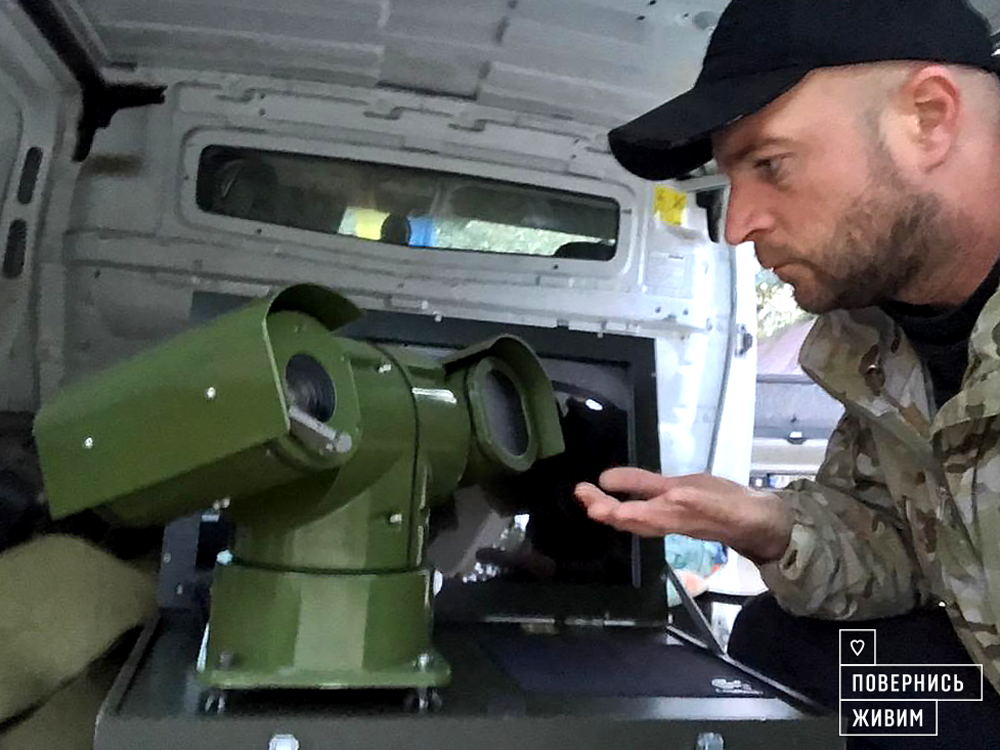

I was extremely gratified that from August 2014 – when we installed one of the first such complexes – to the beginning of 2021, none of our snipers were killed or wounded by sniper bullets in the areas where the systems were located. Yes, the cameras were hit by enemy fire one after another, but we replaced them immediately. In earlier periods, five to six people a month were killed by snipers in these same areas. This is an excellent result for a device costing $3,000.
Money, time, and people
In 2021, we raised UAH 24. n [about $810,000]. For 2022, we set an ambitious goal to raise UAH 28 mn [about $950,000]. But as of April 28, 2022, we have collected UAH 3 bn [nearly $102 mn]. Clearly, we have earned the trust of Ukrainian citizens and the business community. A touching example is that of an elderly woman who for five years has brought 100 hryvnias on the 5th of every month to our office, and she continues to do so. She did not flee Kyiv.
In the last two years, our workload has increased one hundred times, but the number of personnel has only increased two times. This is a team of exceptionally motivated people who have been working 24/7 since the first weeks of 2022 Russian hostilities. We slept a few hours and go back to work, sometimes we find not 24, but 25, 28… 30 hours in a day.
Over the past seven years, we transferred 952 thermal imagers. But in the last two months alone, almost 3,500 imagers have been sent out. The same goes for drones. In the previous seven years, the army had 250 drones, but since 24 February it has acquired almost 3,000.
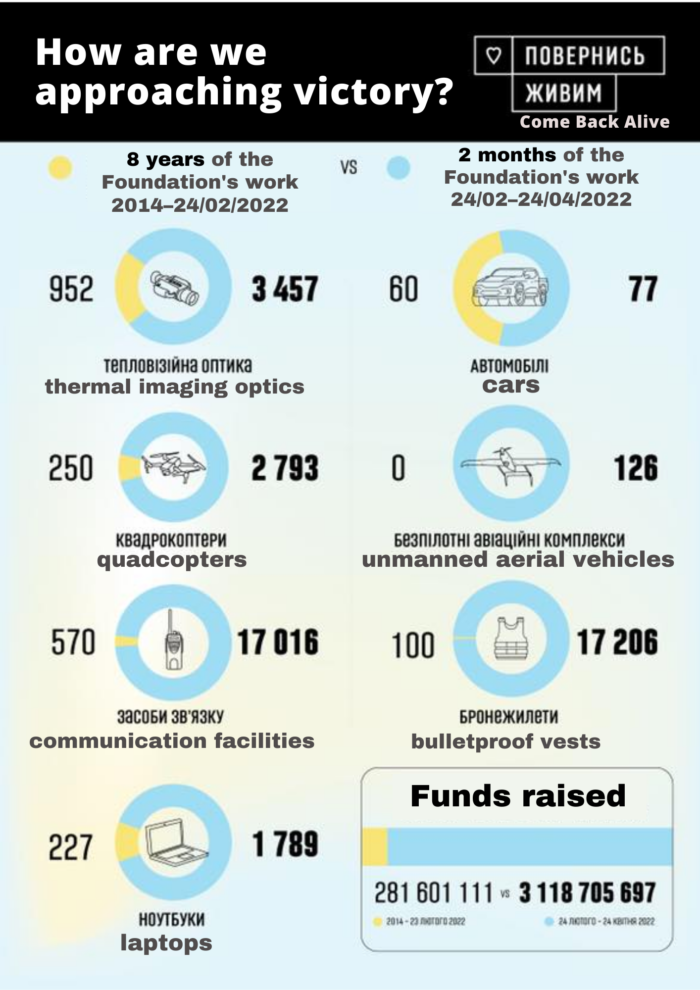
Karpenko confirmed that it is IT companies in Ukraine that financially support the foundation the most. Since 24 February, however, many donations have also come from the agro-industry, despite the fact that our fundraising department has not yet (due to lack of time) reached out to agribusiness. Ukrainian farmers sent 5, 10, and sometimes UAH 12 mn ($410,000) in one day.
The fundamental position of the Come Back Alive Foundation is that all funds received
to support the army are directed to support the army. That is why the Foundation is looking for funding for administrative costs like renting the office and paying salaries, separately from total revenues.
We are a bold charitable foundation, we do everything passionately, and the army can rely on us. It's more than work. People sacrifice a lot in this job. My job has given me many good friends that, unfortunately, I have lost. In six years, I have probably met a thousand sergeants, officers, and other military personnel, who are no longer alive. Witnessing their human spirit is probably the greatest value – I don't even know what to call it. We do everything not just from our hearts… we do it for them, for the future, for the children who also have been lost.
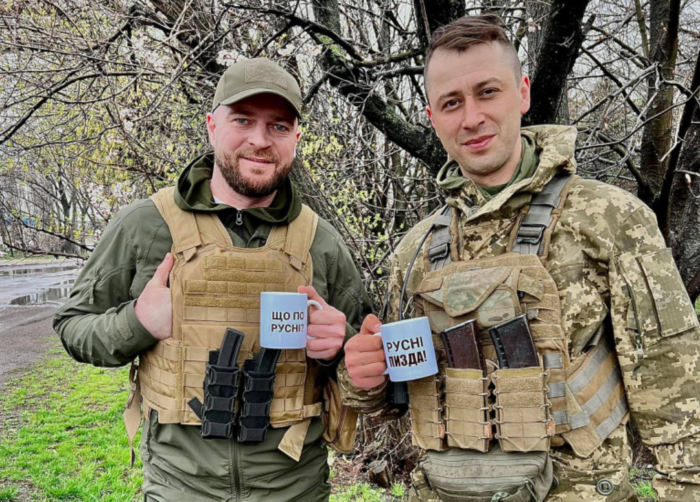
When I came to Bucha [site of the genocidal massacre], where I have lived for 20 years, first of all, I did not go to my apartment, but to the grounds of the church, where there is a mass grave. The bodies of women, children, men, my neighbors, and friends were all dumped there. I immediately forgot about any fatigue, and I wanted, even more, to make the army stronger – we have to make it stronger. I am gratified when Russians in military uniforms die.
When nothing was left in the Ukrainian market, we started buying abroad
The first thing we did on 24 February 05:00 [5 a.m]., when all our team had already gathered in the office, was to try and buy everything that was available in Ukraine for the army. And we did it. We bought dozens of walkie-talkies and some 300 or 400 drones in one payment. There was no room in the office for all we bought.
Then we continued to operate from two, then from three, and now from five points in Ukraine. But by the 3rd or 4th day after the invasion, everything in Ukraine was gone, we were faced with the fact that now everything had to be bought abroad.
To be honest, the first thing we encountered is that the world, seeing the war in Ukraine, immediately thought, "Oh, now we're going to sell them ‘shit.’" They started offering ‘shit’ that you wouldn't ever think of – bad body armor, bad thermal imagers. At the same time, the price immediately doubled. If we used to buy a thermal imager for $1,700 - $3,000, the price tag immediately rose to $2,900 - $5,000. We’re talking about international partners and international friends who support the Come Back Alive Foundation on Facebook with posts but started caring just about profits. At times, there was no way out and we had to buy at such prices because life doesn't have a price.
Meet 8y.o. Arseniy from Saltivka, a raion (district) of Kharkiv that was devastated by Russian bombs and missiles.
Some weeks ago, Arseniy donated 3,000UAH of his own savings to the Come Back Alive fund.
Be like Arseniy and #StandWithUkraine!https://t.co/qA07X16iXD pic.twitter.com/fs8CvJqbUp— Euromaidan Press (@EuromaidanPress) April 22, 2022
It is difficult to work with German, French, and Israeli companies. For example, we wanted to buy a batch of French drones, quite high quality, which are in service in the United States. We had already contracted and paid the bill. Then they said they would not sell us what all we had agreed upon, but only a part of it.
As it turned out, their equipment would have limited the flight range for Ukraine in general, and we were about to spend millions on junk that only flies 500 meters. We refused at the last minute. Fortunately, they returned the money.
The second problem we had was at the state level. Our lawyer Ruslana knocked their brains out in legalities, and we continue to work completely transparently. Despite the large volume of procurement, our purchases go through all the circles of bureaucratic hell. Last week we bought 50 SUVs that are already in Ukraine, officially imported with the necessary customs documents, fully accounted for, and now transferred to the balance of military units with the proper seals and clear photos.
https://twitter.com/EuromaidanPress/status/1522979320519487489
We continue our transparent reporting. But reporting is now being a little bit delayed due to a shortage of human resources. Still, everyone can see our purchases and expenditures. We also coordinate with our Ukrainian communities in the diaspora [communities in the diaspora have donated millions to the war effort].
Some production in Ukraine is already reviving. For example, sappers [engineering technicians who repair infrastructure in combat areas] have already started resuming production of their equipment.
Coping with logistics
I heard a very painful story recently in an interview with Serhiy Prytula [Ukrainian TV mogul who has a large charity foundation for the Ukrainian army] with whom we often discuss the logistics needed by the army. A compelling story out of his foundation is that a worker recently had a heart attack while struggling through applications asking for help. She had to contend daily with rudeness and accusations that the foundation allegedly raised money and kept it, not dispersing it as needed. The stress was too much for her.
We too had such situations in the beginning. Therefore on the second week [after 24 February] we decided not to get buried in these overwhelming logistics and dispersion. We could not answer every request like "help my brother" or "help my son." We made a decision to help brigades and battalions completely. A brigade – “here you have bulletproof vests for the whole brigade. Not two of them, not five, not 10. Here are 600.”
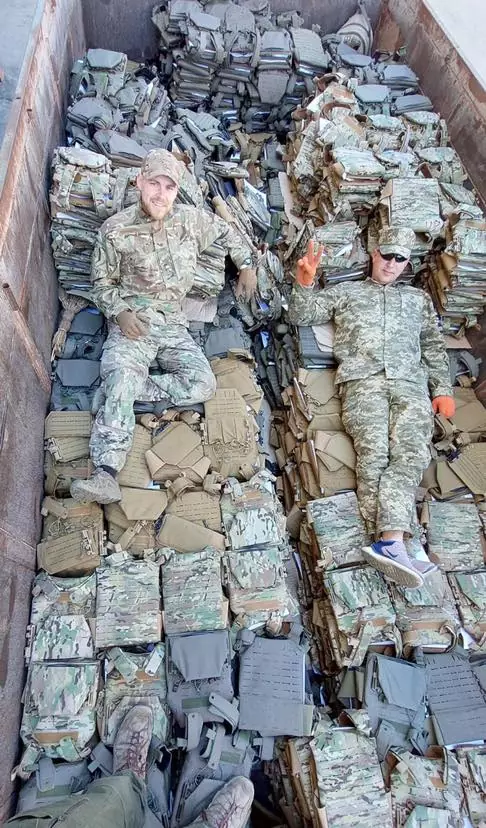
So far, we have provided 17,000 bulletproof vests. This is almost eight full-fledged brigades, or 70% of the forces that actively fought in Donbas up until 2022. We have also helped territorial defense brigades that have also taken an active role in the fighting. These include groups from Kharkiv, Zaporizhzhia, Dnipro, and Kyiv oblasts.
The same goes for drones. We do not answer a call from a single pilot. We call the brigade commander. “How many pilots do you have? How many drones do you need? 10? Here you have 15. You will have a reserve, and we will know that in the coming weeks you will not call.”
Also, I was a little dissatisfied with our earlier practice – we sent one car with aid for one brigade and another car for the second brigade. Then we changed tactics. We sat down, reviewed applications from all over eastern Ukraine, and packed two full trucks. We sent items worth UAH 60 mn [about $2 mn] in two cars in one go for all the brigades in the east. We unloaded everything in one place.
Everyone came and took all of it. There were 500 thermal imagers, hundreds of walkie-talkies, bulletproof vests, drones, generators, printers, laptops, communication systems, antennas, adapters — all the basics you need, especially for communication. So in two trucks there was property worth all the aid the foundation had raised over 3-4 years. But we are not slowing down — now we are entering even narrower niches.
We have people who have been working in our foundation for several years, know all the commanders, battalions, brigades, and even company officers. They check the applications, verify them, and then we provide customized assistance.
One new car is better than three old ones
Criticism used to annoy me, but now it helps me work faster and better. One such situation was the purchase of 50 new cars – new, from the showroom. Yes, it is expensive, but I did not want to go and buy old cars, give them to the army, who then call in 2–3 weeks to say that the car has broken down. They asked to repair it, or to get them another one. In the first place, we give cars to the departments who use Stingers, NLAWs and Javelins. Soldiers equipped with them can quickly approach the target on the car, snort on the tank and run away at a speed of 160 km/h.
https://twitter.com/EuromaidanPress/status/1523119493983223808
Whoever criticized President Volodymyr Zelenskyy for the “Great Construction” program [a large amount of the budget was spent on building roads]
, I was personally very grateful to him last week when I was in Avdiivka. I just flew out of town at 180 km/h because the air shelling started, and the artillery too, and I had no choice but to press the pedal to the floor and race out of that place. In the old days, I wouldn’t have been able to go so fast and the consequences would have been dire. That's why a new car is important, although there were critics who said “It’s expensive, better you go buy three old ones.”
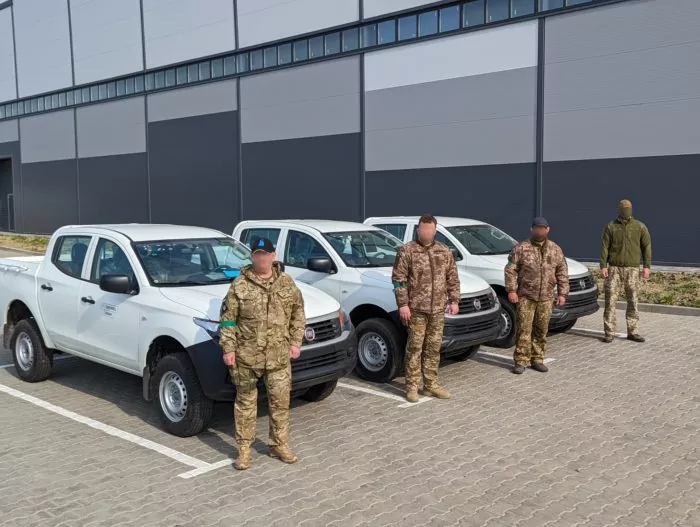
Bronya-Armor program for artillerists, created by Come Back Alive Foundation: how it works
We created the Bronya-Armor software for artillerists in 2016 and have constantly improved it, adding new weapons. I quote our instructor Andriy Maruha and second instructor Vadym Mardanov:
“Seeing a goal and hitting it is professionalism. But not seeing it yet hitting it is an art."
It is these guys who create art because when you shoot a mortar from a close position, you don't see the target, but you know where to loom. If the mortars have a drone, they can fly and find the target. The program can be improved a bit and will be able to work like Siri, when you just say, “I'm standing here, I want to get here, I'm firing 120 mortars.” Of course, there is a technical precondition that weapons must be calibrated. But the program helps to be precise because it does the mathematics and one does not need to spend time scribbling formulas in a notebook or clicking on a calculator. The calculation takes a minute from the moment of installing the mortar. The software turns 15-20 minutes of preparation into one minute.
Before 24 February, half of our infantry armaments utilized the Bronya-Arma program. It’s difficult to say how much it does now because the army has grown 2.5 times. We provided the Army with over 1,000 tablets with the software before February 24, of which about 700 remain today. After that, we gave another 1,000.
Beyond army: working with veterans and analyzing data
We are not only working with the army. We also have a powerful Veterans Rehabilitation Department. We are the general sponsor of the Ukrainian national team at the Invictus Games, and work quite closely with the Ministry of Veterans.
The Ukrainian largest foundation for army, Come back alive, has made special coins for the Ukrainian team on The Invictus Games.
They shared these coins with colleagues from other countries during the sports games for injured servicemen pic.twitter.com/oPe2aovWt4— Euromaidan Press (@EuromaidanPress) April 23, 2022
We also have an analytical department. One of its first reports was a communications report. The second report examined why people are leaving the army, and received a lot of attention from the Office of the President, and the National Security and Defense Council. We have met many times and talked about the problems and what the state needs to change.
But our biggest contribution was when our report on the foundations of national resistance became the basis for a law. As the commander of territorial defense, General Halushkin, said, “You and I have created a monster.’’ We not only helped technically by giving a thermal imager to the front but also created something new in the Armed Forces. We don't just want to simply help, we want to do it effectively.
Beyond Foundation: Atlantis film by Valentyn Vasyanovych
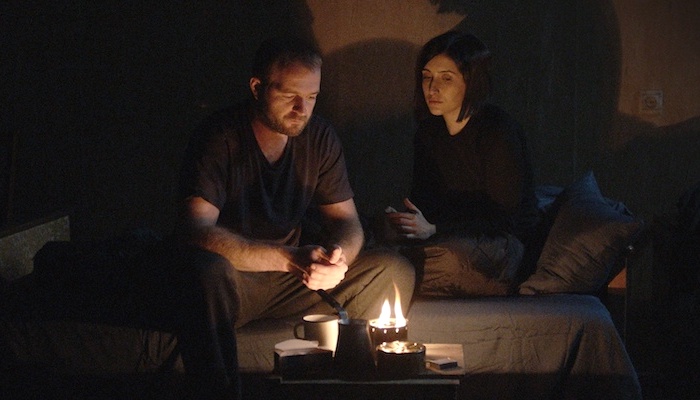
80% of the film was shot on the outskirts of Mariupol [now occupied by Russia]. People of art sometimes have premonitions. After we toured the world in 2019, I remembered the Japanese audience the most. There was no need to tell them about the consequences of war. They know of them more than anyone else – how to be born from the ashes and become one of the strongest countries in the world.
One of the spectators asked if we were afraid of a second attack, and I replied that we were at war, just like them. Because legally the war between Russia and Japan did not end. And every Saturday at 10 a.m. Japanese citizens picket near the Russian embassy. I think Ukraine doesn’t have enough of such a tradition.

The film Atlantis
is a story about death, birth, and life through the prism of a love story. Vasyanovych released his second film, Vidblysk (Reflection), 2021, where I also play a role. While Atlantis is about the future and its consequences, Vidblysk is about the beginning of a war and what the person feels when coming home.
If prior to 2022, approximately a quarter of Ukrainians were touched by war, now 100% are – some emigrated, some went to war, someone’s close ones were killed, and we are talking not only about the military but also civilians, some of whom have been captured. I appreciate that Atlantis has become a powerful information weapon. It was striking to read the Italian press, which before the film release called the situation in Ukraine a “conflict,” then after the release called it a “war.”
What was wrong with preparations for war
In my view, the biggest enemies were former Defense Minister Andriy Taran and Commander-in-Chief Ruslan Khomchak. I joined a club of lunatics who, a few months after the appointment, shouted that these people were destroying the army. And it was true. Most of the army spoke about it in private, but could not say it directly. I am very glad that they were removed in time, and we managed to do things right.
I was skeptical of many processes, but I am incredibly proud of incumbent Minister of Defense Oleksiy Reznikov. I have known our Commander-in-Chief Valeriy Zaluzhnyi personally since 2015. I met him at the Shyrokyy Lan training base when I was part of the 53rd Brigade. And I am proud that he was elected Commander-in-Chief. Probably, there was no better candidate.
What’s next for the Come Back Alive Foundation
We are now in the process of fully providing the army with all the necessary UAVs: starting from the usual infantry drones and ending with unmanned aerial vehicles such as PD-2 and Leleka [Ukrainian product, translated as "Stork"]. The state bought 20 Leleka complexes from DeViRo, and the Come Back Alive Foundation bought 25 of them. Currently, we are negotiating 10 more-expensive complexes. I do not rule out that even more expensive and even more important systems will be purchased in the future.
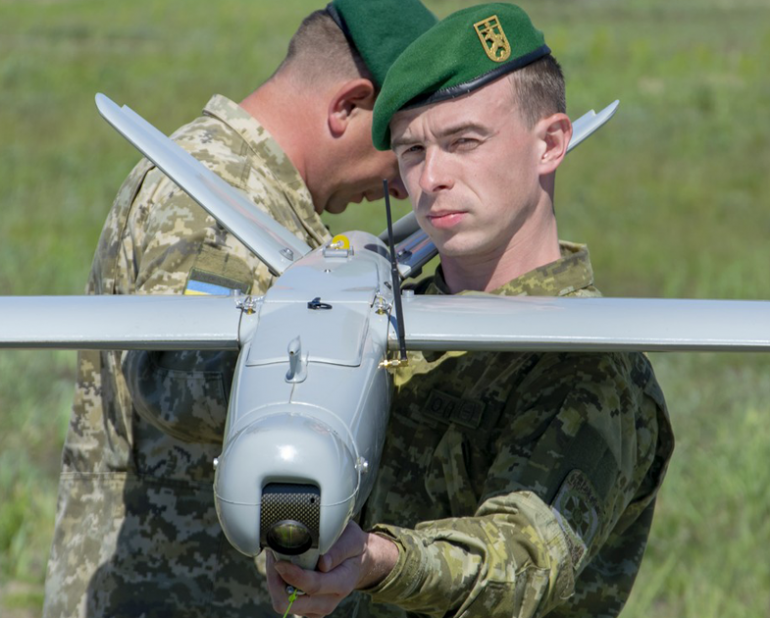
We expect that donations will gradually decline, and are preparing for this. Unfortunately, the war continues and everything we bought at the beginning of the war is consumable. More than half of our thermal imagers, to my knowledge, have already been destroyed, most drones are no longer flying. But without these, confrontation with the so-called “second army of the world” will be impossible.
Even if combat subsides a little, it will not end – only subside. I have firm confidence that we will continue the fight and liberate Donetsk, Luhansk and Crimea, and return the whole of Ukraine’s territories to their rightful borders as in 2013-2014 .
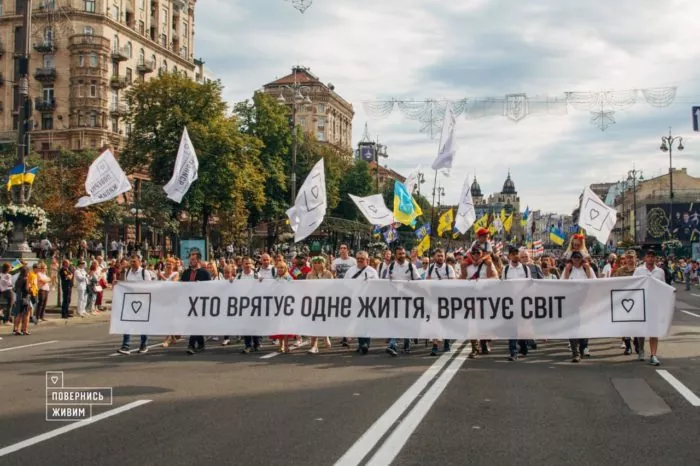
After the end of active combat, or even the war itself, we will have a lot of work to restore the army. Much will need to be built from scratch… update all command posts, communications, all wheeled vehicles, throw away everything Soviet, and buy new things. In all of this, it will be critical to utilize expertise. We will be there for those people who will make these final decisions. We need to win this war, and then we have to work hard, because, unfortunately, we have to live with this neighbor.
Related:
- Verified ways to help Ukraine
- What weapons for Ukraine would help it win the war against Russian aggression
- Javelins are good, but it is artillery strikes that coined Ukraine’s military...
- Facts about the Ukrainian war: Russians lose
- Why arming Ukraine won’t cause World War Three: expert opinion
- Financing Putin’s war: Russian coal and gas exports to EU grow despite...
- We will see Russia’s collapse in our lifetime: Ukraine’s RNBO chief Danilov
- Latest from Moscow on Ukraine more frighteningly explicit than even Hitler, Savvin...
- Ukraine’s unanswered plea for MiG29s: consequence of NATO’s fear of Article 5

